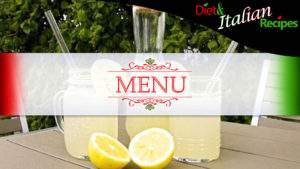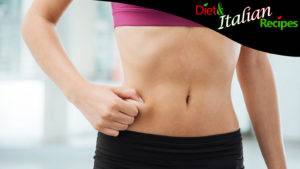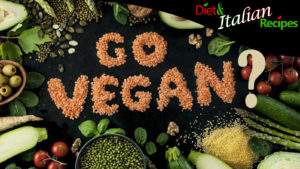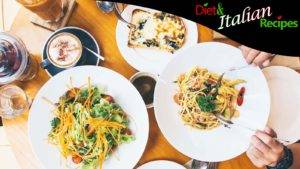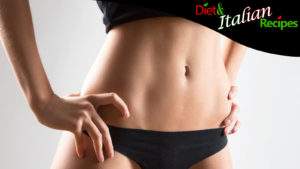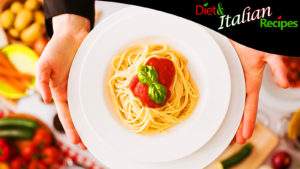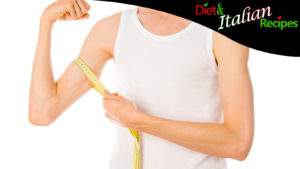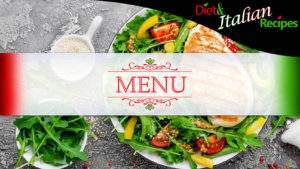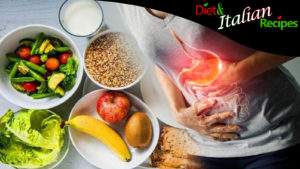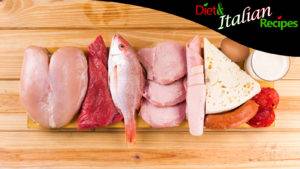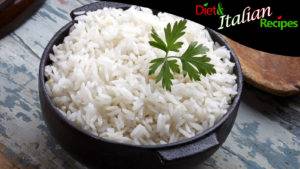The high-calorie diet is a healthy diet that is used for weight gain or muscle mass, suitable for men or women with an example weekly menu. The high-calorie diet, which means ‘with more calories’, can be helpful for weight gain by following a healthy and balanced high-calorie diet. It is called a high-calorie high-protein diet when it is used for muscle building, with more protein in the diet to nourish the muscles. High-calorie and high-protein diets for men can reach up to 2500-3000 kcal, with calories established at a fixed percentage of more than 10%. Let’s see how the weekly high-calorie diet works, there is no pdf, but you can save this article for easy access to the diet.
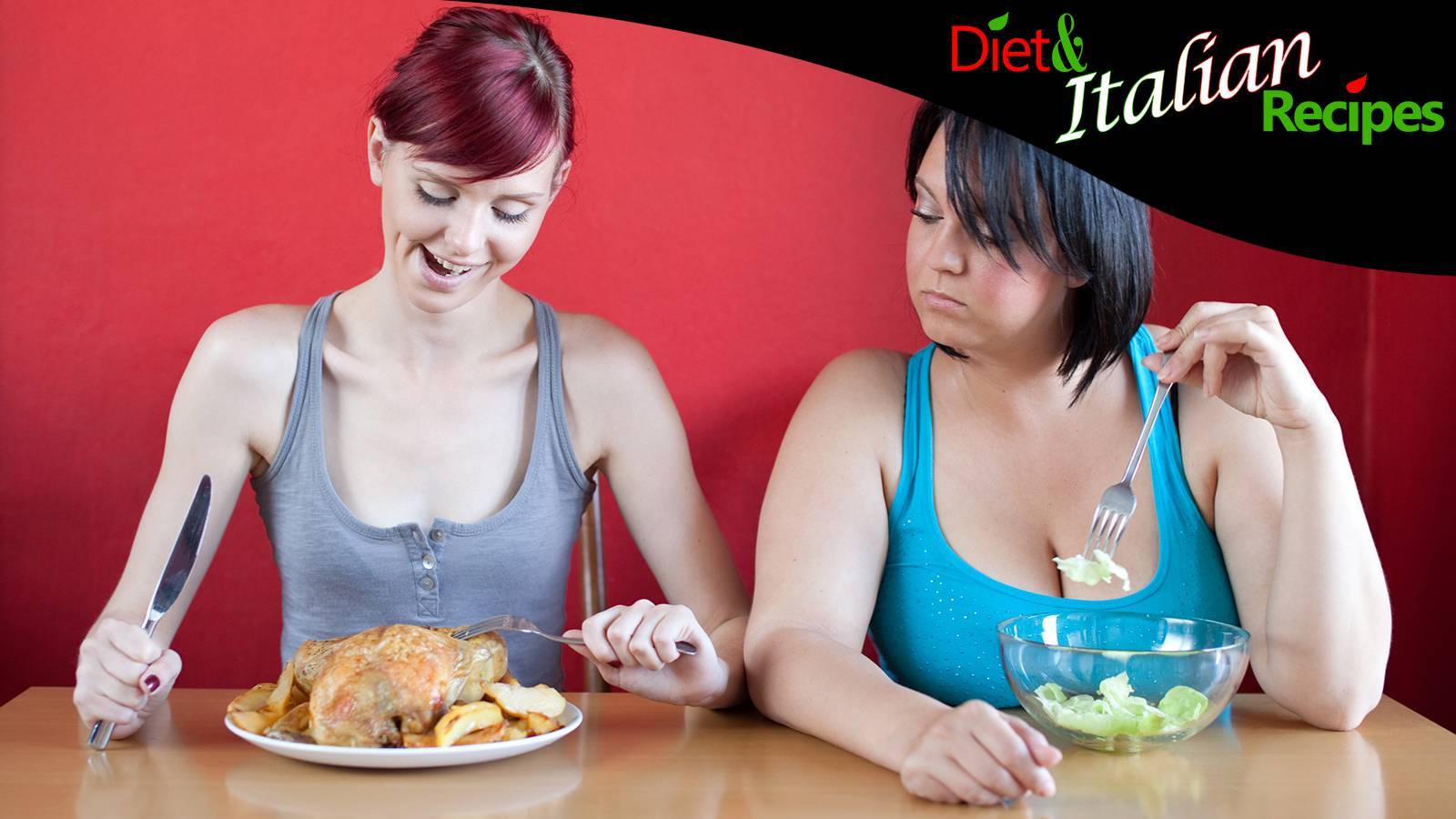
High-Calorie Diet
The high-calorie diet is a healthy diet based on increasing daily calories for weight gain or muscle mass in a balanced way. A high-calorie diet is the opposite of a low-calorie diet, as it enhances nutrient intake allowing healthy weight gain.
Usually, those who eat little, are malnourished, depressed, physically impaired, slender, ectomorphic, or elderly need a high-calorie diet. However, healthy women and men often seek high-calorie and high-protein diets to build muscle mass.
In any case, the high-calorie diet should be followed for a limited period as it constitutes a dietary forcing that breaks the balance of body weight.
High Calorie Diet: How many extra calories?
According to MyPersonalTrainer experts, “a high-calorie diet requires a total energy increase equal to, but not exceeding, 10% of the normal calorie intake.” “In other words, assuming a 1800kcal requirement for an underweight subject, the corresponding high-calorie diet will be equal to: 1800kcal + (10% * 1800kcal)” that is “1800kcal + 180kcal = 1980kcal.” This means that a 3000 kcal or a 2500 calorie high-calorie diet must be earned through physical effort; if more than 1000 calories are burned through training, a high-calorie and high-protein diet is definitely necessary.
High-calorie diet, underweight BMI
BMI, Body Mass Index, is calculated by dividing body weight in kilograms by the square of height in meters. For example: 50 kg/(1.70 m)² = 50 kg/2.89 = 17.3. BMI does not distinguish between fat mass and lean mass, so it is much more useful to be aware of one’s percentage of body fat to have a more complete picture of the situation. However, there are BMI ranges that establish that you are underweight if your BMI value is less than 18.5. You are deemed to be a healthy weight with BMI between 18.5 and 25.
High-calorie diet for ectomorphs
A “high-calorie diet for ectomorphs” is necessary because ectomorphic individuals have difficulty gaining muscle mass, so they will have to adopt a high-calorie and high-protein diet. The high-calorie diet to gain weight concerns mainly men, ectomorphic or simply considered underweight (with a BMI lower than 18.5).
Example weekly MENU of a High-Calorie Diet
Let’s see an example of a healthy high-calorie diet with a weekly menu example, suggesting examples of breakfast, lunch, dinner, and snacks for a high-calorie diet. The following example weekly menu refers to an example high-calorie diet and should therefore be considered as a suggestion, example, and not as a guide to be followed strictly. For a personalized diet, always consult specialized nutritionists.
Monday: example WEEKLY MENU High-calorie diet
- Breakfast: One large cup (8-9 oz) of whole or partially skimmed milk + 4-6 five-grain toast with a spread of butter and fruit jam + 1 seasonal fruit of choice.
- Morning snack: 1 sandwich made with: 1 slice of white or whole wheat bread + lean cold cuts (prosciutto, ham, turkey, or bresaola) + 0.5 oz of walnuts or almonds.
- Lunch: 3.5 oz of pasta with tomato sauce or vegetables and 1 tablespoon of Parmesan cheese + 1.75 oz of dried legumes (beans, lentils, chickpeas) + Vegetables or salad at will + 1 or 2 slices of white or whole wheat bread + 2 tablespoons of extra-virgin olive oil + 1 seasonal fruit of choice.
- Afternoon snack: 1 fruit-flavored yogurt of choice + 0.5 oz of walnuts.
- Dinner: 7 oz of white meat (chicken or turkey) + 2-3 slices of white or whole wheat bread + Vegetables or salad at will + 2 tablespoons of extra-virgin olive oil + 1 seasonal fruit of choice.
- Evening snack: 1 seasonal fruit of choice.
Tuesday: example WEEKLY MENU High-calorie diet
- Breakfast: One large cup (7-8 oz) of whole or low-fat milk + 1 slice of medium-thick homemade doughnut + 1 seasonal fruit of your choice.
- Morning snack: 1 sandwich made with: 1 slice of white or whole wheat bread + lean deli meat (prosciutto, ham, turkey, or bresaola) + 0.5 oz of nuts or almonds.
- Lunch: 3.5 oz of rice with tomato or vegetables and 1 tablespoon of Parmesan cheese + 3.5 oz of white meat (chicken or turkey) + Unlimited serving of vegetable or salad + 1 or 2 slices of white or whole wheat bread + 2 tablespoons of extra-virgin olive oil + 1 seasonal fruit of your choice.
- Afternoon snack: 1 fresh fruit smoothie with milk + 0.5 oz of almonds.
- Dinner: 6.3 oz of red meat (veal, beef or lean beef) + 1.8-2.1 oz of rice + Unlimited serving of vegetable or salad + 2 tablespoons of extra-virgin olive oil + 1 seasonal fruit of your choice.
- Evening snack: 1 glass of low-fat milk.
Wednesday: example WEEKLY MENU Hypocaloric Diet
- Breakfast: One large cup (7-9 oz) of whole or partially skimmed milk + 1 slice of medium thickness fruit tart + 1 seasonal fruit of your choice.
- Morning snack: 1 sandwich made with: 1 slice of white or wholemeal bread + lean meats (raw or cooked ham, turkey, beef carpaccio) + 0.5 oz of walnuts or almonds.
- Lunch: 3.5 oz of couscous with tomatoes or vegetables and 1 tablespoon of parmesan cheese + 5.3 oz of “white” lean fish (sole, cod, etc.) + Vegetable side dish or salad as desired + 1 or 2 slices of white or wholemeal bread + 2 tablespoons of extra virgin olive oil + 1 seasonal fruit of your choice.
- Afternoon snack: 1 fruit-flavored yogurt of your choice + 0.35 oz of dark chocolate.
- Dinner: 6.3 oz of lean pork + 2 medium potatoes (about 7 oz each) + Vegetable side dish or salad as desired + 2 tablespoons of extra virgin olive oil + 1 seasonal fruit of your choice.
- After-dinner snack: 1 seasonal fruit of your choice.
Thursday: example WEEKLY MENU High Caloric Diet
- Breakfast: One large cup (7-8 oz) of whole or partially skimmed milk + 1 slice of medium-thickness yogurt plum cake + 1 seasonal fruit of choice.
- Mid-morning snack: 1 sandwich made with: 1 slice of white or wholemeal bread + lean cold cuts (raw or cooked ham or turkey or bresaola) + 0.5 oz of walnuts or almonds.
- Lunch: 3.5 oz pasta with tomato or vegetables and 1 tablespoon of Parmesan cheese + 1.75 oz of dry legumes (beans, lentils, chickpeas) + Unlimited serving of vegetables or salad + 1 or 2 slices of white or wholemeal bread + 2 tablespoons of extra virgin olive oil + 1 seasonal fruit of choice.
- Afternoon snack: 1 fresh fruit smoothie with milk + 0.5 oz of walnuts.
- Dinner: 6.35 oz of “oily” fish (salmon, mackerel, anchovies, etc.) + 2-3 slices of white or wholemeal bread + Unlimited serving of vegetables or salad + 2 tablespoons of extra virgin olive oil + 1 seasonal fruit of choice.
- Evening snack: 1 cup of partially skimmed milk.
Friday: example WEEKLY MENU High Caloric Diet
- Breakfast: One large cup (7-8 oz) of whole or partially skimmed milk + 8-10 cookies of choice + 1 seasonal fruit of choice.
- Mid-morning snack: 1 sandwich made with: 1 slice of white or wholemeal bread + lean cold cuts (raw or cooked ham or turkey or bresaola) + 0.5 oz of walnuts or almonds.
- Lunch: 3.5 oz farro with tomato or vegetables and 1 tablespoon of Parmesan cheese + 2.82 oz of lean cheeses such as ricotta, curd cheese, first salt cheese or mozzarella + Unlimited serving of vegetables or salad + 1 or 2 slices of white or wholemeal bread + 2 tablespoons of extra virgin olive oil + 1 seasonal fruit of choice.
- Afternoon snack: 1 fruit-flavored yogurt of choice + 0.5 oz of almonds.
- Dinner: 8.8 oz of lean or semi-lean “white” fish (sole, cod, sea bass, etc.) + 1.76-2.1 oz of rice + Unlimited serving of vegetables or salad + 2 tablespoons of extra virgin olive oil + 1 seasonal fruit of choice.
- Evening snack: 1 seasonal fruit of choice.
Saturday: example WEEKLY MENU Hypercaloric Diet
- Breakfast: One large cup (7-8.5 oz) of whole or partially skimmed milk + 3 slices of toast with butter and jam and 4 biscuits + 1 seasonal fruit of choice.
- Morning snack: 1 sandwich made with: 1 slice of white or whole wheat bread + lean cold cuts (prosciutto, cooked ham, turkey or bresaola) + 0.5 oz of walnuts or almonds.
- Lunch: 3.5 oz of rice with tomatoes or vegetables and 1 tablespoon of Parmesan cheese + 1 egg and 2 oz of sliced cold cuts + Side dish of vegetables or salad to taste + 1 or 2 slices of white or whole wheat bread + 2 tablespoons of extra virgin olive oil + 1 seasonal fruit of choice.
- Snack: 1 fresh fruit smoothie with milk + 0.35 oz of dark chocolate.
- Dinner: 2 eggs + 2 medium potatoes (about 7 oz) + Side dish of vegetables or salad to taste + 2 tablespoons of extra virgin olive oil + 1 seasonal fruit of choice.
- After dinner snack: 1 glass (8 oz) of partially skimmed milk.
Sunday: example WEEKLY MENU Hypercaloric Diet
- Breakfast: One large cup (7-8.5 oz) of whole or partially skimmed milk + 4-6 barley malt toast with a veil of butter and fruit jam + 1 seasonal fruit of choice.
- Morning snack: 1 sandwich made with: 1 slice of white or whole wheat bread + lean cold cuts (prosciutto, cooked ham, turkey or bresaola) + 0.5 oz of walnuts or almonds.
- Lunch: 3.5 oz of couscous with tomatoes or vegetables and 1 tablespoon of Parmesan cheese + 5.3 oz of mollusks (squid, shrimp, etc.) + Side dish of vegetables or salad to taste + 1 or 2 slices of white or whole wheat bread + 2 tablespoons of extra virgin olive oil + 1 seasonal fruit of choice.
- Snack: 1 fruit-flavored yogurt of choice + 0.5 oz of walnuts.
- Dinner: 7 oz of white meat (chicken or turkey) + 2-3 slices of white or whole wheat bread + Side dish of vegetables or salad to taste + 2 tablespoons of extra virgin olive oil + 1 seasonal fruit of choice.
- After dinner snack: 1 seasonal fruit of choice.
SHARE the high-calorie diet example for weight gain example weekly menu.
The information provided in the Diet and Italian Recipes articles is for INFORMATION ONLY and does not intend to replace the opinion of professional figures such as a doctor, nutritionist, or dietitian, whose intervention is necessary for the prescription and composition of personalized dietary therapies.
